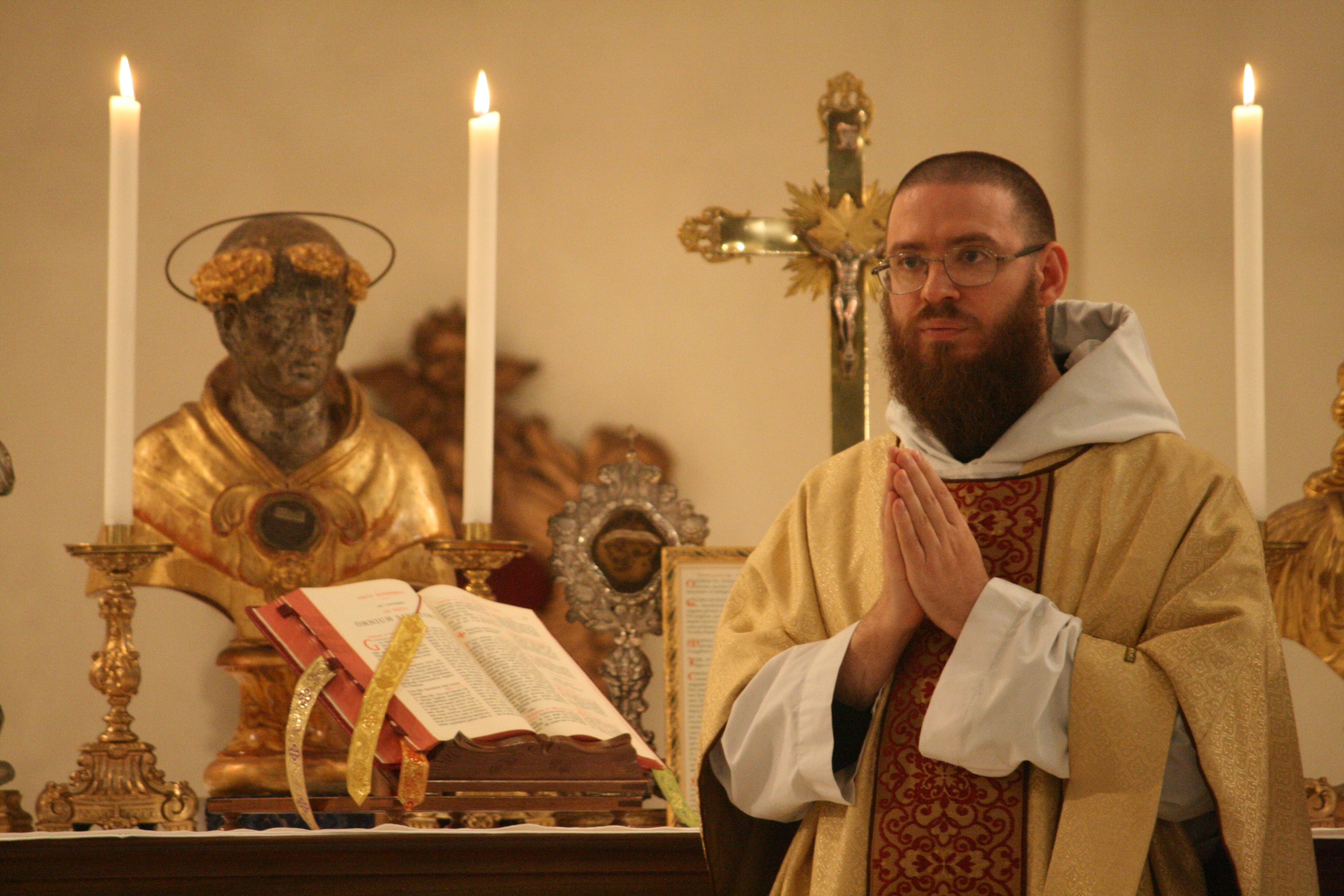Our students come from all over the world…and they then go out to serve all over the world. Here is a recent sermon from ITI graduate Fr. Thomas Bolin:

The Significance of the Miracles of the Loaves
by Rev. Thomas Bolin, O.S.B.
Subprior , Monastery of San Benedetto, Norcia, Italy
In today’s Gospel passage, Jesus performs a miracle, and thus provides food for a large crowd of about 4,000 people, with seven loaves of bread and a few fish. Earlier in the Gospel, Jesus performs another similar miracle, and later, after the passage from today, compares the miracles: “And do you not remember? When I broke the five loaves for the five thousand, how many baskets full of leftover pieces did you take up?’ They said to him, ‘Twelve.’ And the seven for the four thousand, how many baskets full of leftover pieces did you take up?’ And they said to him, ‘Seven.’ And he said to them, ‘Do you not yet understand?’” (Mk 8:18-21).
Perhaps we, too, don’t understand the meaning of these particular numbers, even if one could say that both numbers, seven and twelve, are different ways of expressing perfection: each of these two numbers is composed, in a different way, of three and four. Three plus four is seven, and three times four is twelve. Thus, the number of baskets in each case signifies perfection. We could reasonably say that the miracle of the loaves signifies the Sacrament of the Eucharist, and therefore, perhaps, the remaining baskets signify that when one divides the Eucharist, Jesus fully remains in each portion. In the same way, his body and his blood are both present under the species of bread and wine. But if we understand the miracle in this way (or in another way), the general meaning would be that the power of God remains perfect when he does something for us, i.e., nothing is lost.
However, let’s look at the specific numbers. In the miracle of today’s Gospel passage, Jesus feeds 4,000 people with seven loaves. On the other hand, in the previous miracle, he feeds 5,000 people with five loaves. Thus, he uses fewer loaves to feed a larger crowd, and more loaves to feed a smaller crowd. What this indicates is that when God does something, he prefers to utilize weaker instruments to manifest his power with greater completeness. Thus, St. Therese of the Child Jesus says that God loves to use weak and imperfect people to bring out his plan, because this glorifies God more. Thus, he reveals himself as the true source of salvation, which could otherwise be erroneously attributed to the instruments.
This type of miracle, a miraculous multiplication of food, is common enough in the lives of the saints and is found in the Old Testament. For example, the prophet Elisha performs a similar miracle, giving food to a hundred people with a small quantity of loaves, and likewise, he multiplies the widow’s jar of oil such that she could pay her debts (cf. 2 Kgs 4). Jesus deliberately performs similar miracles to those of the ancient prophets, but his are even greater, inasmuch as 5,000 is greater than a hundred, and in the end, this demonstrates that he is greater than all of the prophets. Thus, not too long after the discussion of these two miracles, we read about the episode at Caesarea Philippi, where Jesus asks: “Who do men say that I am?” (Mk 8:27). Men think that he is just one of the prophets, but only the disciples, and in particular Peter, see that he is someone greater than the prophets: “You are the Christ” (Mk 8:29), to which Peter adds in the Gospel of Matthew, “the Son of the living God” (Mt 16:16).
We can see in all this an optimal reason to trust ourselves to Christ and his power to guide our lives. And the weaker and more impotent that we are, the more Christ can operate in us, just as he feeds the larger crowd with fewer loaves. Therefore, let’s go to him each day and let’s try to follow him ever more closely, in particular with the heavenly bread of the Sacrament of the Eucharist.